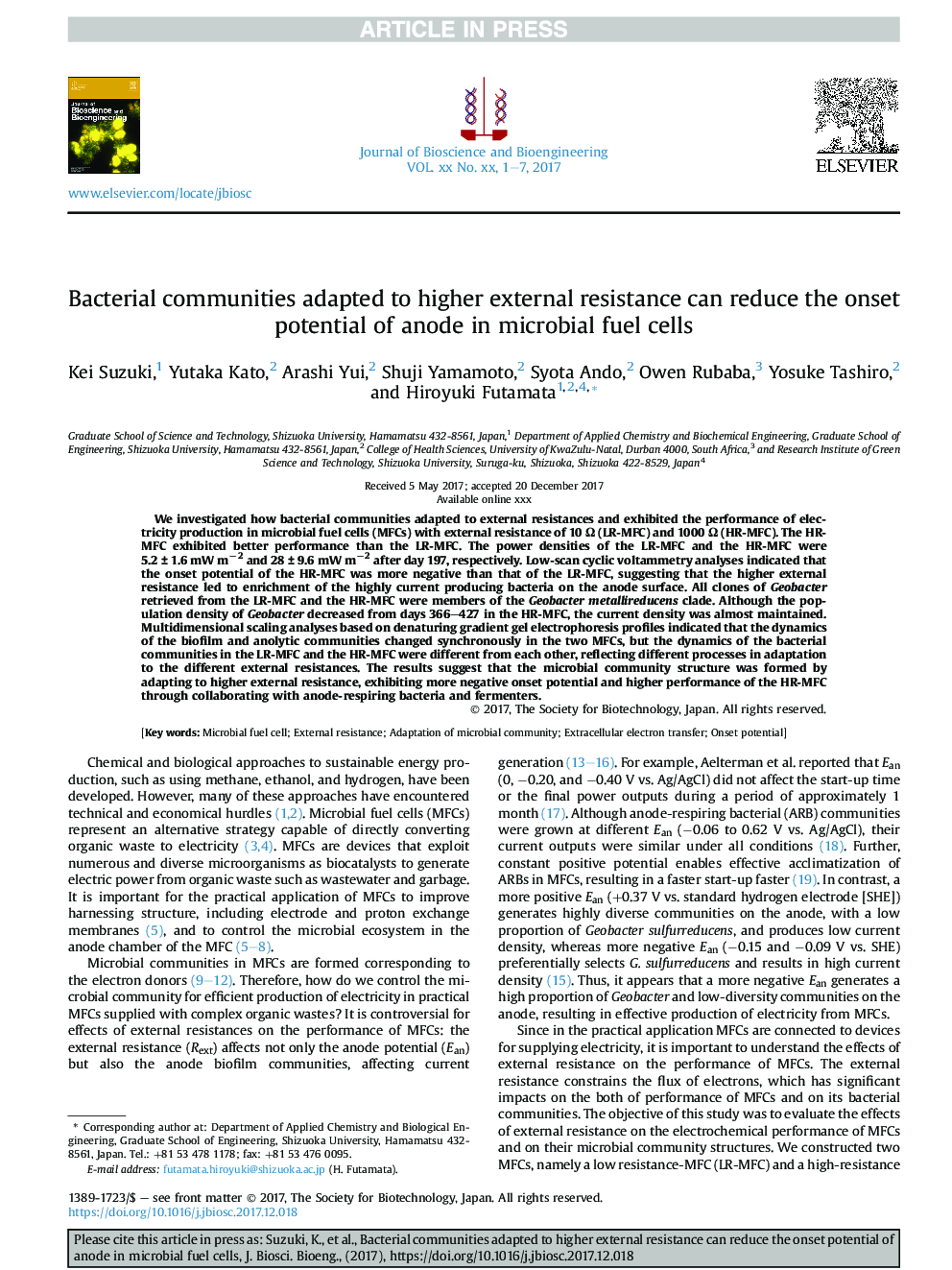| Article ID | Journal | Published Year | Pages | File Type |
|---|---|---|---|---|
| 6489837 | Journal of Bioscience and Bioengineering | 2018 | 7 Pages |
Abstract
We investigated how bacterial communities adapted to external resistances and exhibited the performance of electricity production in microbial fuel cells (MFCs) with external resistance of 10 Ω (LR-MFC) and 1000 Ω (HR-MFC). The HR-MFC exhibited better performance than the LR-MFC. The power densities of the LR-MFC and the HR-MFC were 5.2 ± 1.6 mW mâ2 and 28 ± 9.6 mW mâ2 after day 197, respectively. Low-scan cyclic voltammetry analyses indicated that the onset potential of the HR-MFC was more negative than that of the LR-MFC, suggesting that the higher external resistance led to enrichment of the highly current producing bacteria on the anode surface. All clones of Geobacter retrieved from the LR-MFC and the HR-MFC were members of the Geobacter metallireducens clade. Although the population density of Geobacter decreased from days 366-427 in the HR-MFC, the current density was almost maintained. Multidimensional scaling analyses based on denaturing gradient gel electrophoresis profiles indicated that the dynamics of the biofilm and anolytic communities changed synchronously in the two MFCs, but the dynamics of the bacterial communities in the LR-MFC and the HR-MFC were different from each other, reflecting different processes in adaptation to the different external resistances. The results suggest that the microbial community structure was formed by adapting to higher external resistance, exhibiting more negative onset potential and higher performance of the HR-MFC through collaborating with anode-respiring bacteria and fermenters.
Related Topics
Physical Sciences and Engineering
Chemical Engineering
Bioengineering
Authors
Kei Suzuki, Yutaka Kato, Arashi Yui, Shuji Yamamoto, Syota Ando, Owen Rubaba, Yosuke Tashiro, Hiroyuki Futamata,
